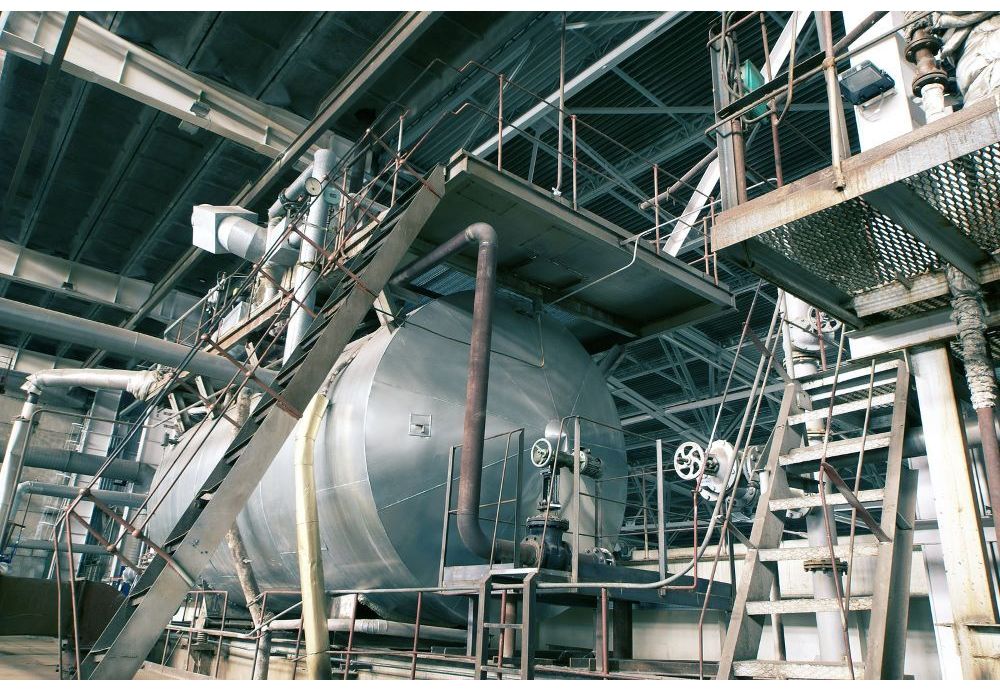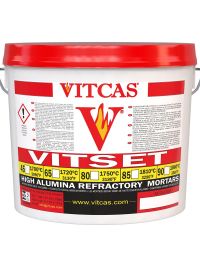A boiler refractory is a vital component of industrial boilers, providing insulation and protecting the boiler shell from high temperatures. Refractory materials are specially designed to withstand extreme heat and pressure, ensuring the boiler operates efficiently and safely. By lining the interior walls of the boiler, refractory materials help maintain a consistent temperature and prevent heat loss.
Boiler refractories are essential for various industries, including power generation, petrochemicals, and manufacturing. The performance of a boiler greatly depends on the quality and condition of its refractory lining. To ensure the longevity and efficiency of the boiler, it is crucial to maintain the refractory lining properly.
In this article, we will discuss the importance of refractory lining in boiler efficiency, common causes of refractory lining damage, signs that your boiler refractory needs restoration, expert tips for refractory lining restoration, refractory maintenance best practices, and more.
Importance of refractory lining in boiler efficiency
Refractory lining plays a critical role in the overall efficiency and performance of a boiler. It serves as a barrier between the boiler's combustion chamber and the surrounding environment, ensuring that heat generated during combustion is retained within the system. This heat retention is essential for the boiler to produce steam at the required temperature and pressure, ultimately improving overall boiler efficiency.
In addition to its insulating properties, refractory lining also protects the boiler shell and tubes from the corrosive effects of high-temperature gases and combustion by products. Without proper refractory lining, the structural integrity of the boiler can be compromised, leading to costly repairs or even catastrophic failures.
Furthermore, a well-maintained refractory lining can help minimise heat loss, reducing energy consumption and lowering operating costs. In summary, refractory lining is crucial for ensuring the safe, efficient, and reliable operation of industrial boilers.
Common causes of refractory lining damage
Refractory lining damage can occur due to several factors, including thermal stress, mechanical stress, and chemical corrosion. Understanding the common causes of refractory lining damage is essential for effective boiler refractory maintenance.
- Thermal Stress: Rapid temperature changes can cause the refractory material to expand and contract, leading to cracks and spalling. This type of damage is often seen in boilers that experience frequent start-ups and shutdowns.
- Mechanical Stress: Physical strain, such as pressure from the boiler's operation or external forces, can cause refractory material to become dislodged or crack. Additionally, improper installation or poor-quality materials can exacerbate mechanical stress.
- Chemical Corrosion: Certain chemicals, including sulphur and alkalis, can react with refractory materials and cause deterioration. This type of damage is more likely to occur in boilers that burn fuels with high sulphur content or in environments with high levels of alkali.
Signs that your boiler refractory needs restoration
Detecting the signs of refractory damage early is crucial for preventing further deterioration and ensuring the continued efficiency and safety of your boiler. Some common indicators that your boiler refractory may need restoration include:
- Visible cracks or spalling: Inspect the refractory lining for any visible cracks, spalling, or loose material. These signs can indicate thermal or mechanical stress and should be addressed promptly.
- Excessive heat loss: If you notice an increase in heat loss from your boiler or higher energy consumption, it could be a sign that the refractory lining is damaged and needs restoration.
- Reduced boiler output: A decrease in boiler output or efficiency can be a signal that the refractory lining is not adequately retaining heat, necessitating restoration.
- Frequent boiler shutdowns: If your boiler is experiencing frequent shutdowns or operational issues, it may be due to refractory lining damage.
Expert tips for refractory lining restoration
Restoring a damaged refractory lining is crucial for ensuring the safety and efficiency of your boiler. Here are some expert tips for successful refractory restoration:
- Assess the extent of the damage: Before beginning any refractory repairs, thoroughly assess the extent of the damage to determine the most appropriate restoration method.
- Choose the right refractory material: Selecting the appropriate refractory material for your boiler type and operating conditions is essential for effective restoration. Consider factors such as temperature, pressure, and chemical exposure when selecting a refractory material.
- Follow proper installation procedures: Adhering to the manufacturer's guidelines and industry best practices for refractory installation is critical for ensuring the longevity of the restored lining.
- Allow sufficient curing and drying time: Proper curing and drying of the refractory material are essential for achieving optimal performance. Follow the manufacturer's recommendations for curing and drying times.
Refractory maintenance best practices
Regular refractory maintenance is essential for prolonging the life of your boiler refractory and ensuring optimal performance. Here are some best practices for refractory maintenance:
- Conduct routine inspections: Regularly inspect the refractory lining for signs of damage, such as cracks, spalling, or dislodged material. Early detection of damage can help prevent more extensive repairs.
- Monitor boiler performance: Keep a close eye on boiler performance metrics, such as efficiency, heat loss, and output. Any sudden changes in these metrics could indicate refractory damage.
- Address damage promptly: If you detect signs of refractory damage, take prompt action to repair or replace the affected areas. Delaying repairs can lead to more severe damage and increased repair costs.
- Schedule regular maintenance: Establish a routine maintenance schedule for your boiler refractory, including inspections, cleaning, and repairs as needed.
Choosing the right boiler refractory material
Selecting the appropriate refractory material for your boiler is crucial for ensuring the longevity and efficiency of the refractory lining. Some factors to consider when choosing a boiler refractory material include:
- Operating temperature: The refractory material must be able to withstand the maximum operating temperature of your boiler.
- Pressure resistance: Choose a refractory material with sufficient strength to withstand the pressure exerted by the boiler during operation.
- Chemical resistance: Consider the potential for chemical exposure, such as sulphur or alkali, and select a refractory material with adequate resistance to these chemicals.
- Thermal conductivity: The refractory material should have low thermal conductivity to minimize heat loss and improve boiler efficiency.
Understanding the refractory repair process
The refractory repair process involves several steps, including damage assessment, material selection, installation, and curing. Here is a brief overview of the refractory repair process:
- Damage assessment: Inspect the refractory lining to determine the extent of the damage and identify the underlying cause.
- Material selection: Choose an appropriate refractory material based on the boiler type, operating conditions, and specific repair needs.
- Installation: Remove any damaged refractory material and follow the manufacturer's guidelines for installing the new refractory material.
- Curing and drying: Allow the refractory material to cure and dry according to the manufacturer's recommendations before resuming boiler operation.

Guidelines for Repairing and Re-lining Large, Semi-Industrial, and Industrial Boilers
Please follow the guidelines provided below for repairing or re-lining large, semi-industrial, and industrial boilers. This guide will focus on three specific components: burner blocks, doors, and general repairs.
Burner Blocks:
The burner block is the area surrounding the burner, which can be either gas or oil. Given the elevated temperatures in this area, even in relatively low-temperature environments of approximately 1,000°C, certain procedures should be followed. For the construction of new burner blocks, we recommend using Refractory Castable 1600°C. A mould made of wood, metal, or fiberglass will be required.
- Clean the mould and apply vegetable oil to its inner surfaces to aid in the block's subsequent release.
- Combine the prescribed amount of water with the castable in a bucket, using a drill mixer for blending.
- Transfer the material into the mold with a trowel, ensuring maximum compaction. Employ vibration, if available, to assist with this process.
- Once the mould is filled, cover it with a plastic sheet and let it set overnight.
- Remove the plastic the next day, then allow another 1-2 days before extracting the block from the mould.
- Store the block at room temperature (approximately 20°C) for at least 3 days.
- Once this is done, install and start using the block. Maintain a small flame on the burner during the initial hours to facilitate moisture evaporation.
Boiler Doors:
The linings of typically circular boiler doors can be renewed using these steps:
- Determine the required quantity of material. We suggest using a 1600 grade refractory castable. To calculate the volume needed in cubic meters for a circular door, use the following calculator: https://www.vitcas.com/calculator2
- Note: In practice, the quantity of material required may vary due to factors such as chamfered material edges.
- For reinforcement in high-wear and high-abrasion environments, consider adding stainless steel needles, each about 25mm long to account for thermal expansion. The recommended quantity is 2% by weight. For the volume calculated above, this equates to roughly 1.5 kilograms.
- Detach the door from the boiler and position it horizontally on an appropriate work surface. This enhances accessibility during the re-lining process.
- To ensure the adherence of the refractory material to the door's vertical metal surface, weld 'T' anchors onto the door (if not already present) and coat them with bitumen paint. The refractory will solidify around these anchors, effectively securing the material in place. As the bitumen burns away, it will leave a small gap, allowing the metal anchor to expand without cracking the surrounding material.
Conclusion: Enhancing boiler efficiency through refractory restoration
In conclusion, proper refractory maintenance and restoration are crucial for ensuring the safety, efficiency, and longevity of your boiler. By understanding the importance of refractory lining, recognising the signs of damage, and following expert tips for restoration and maintenance, you can significantly enhance your boiler's performance and reduce energy consumption.





















